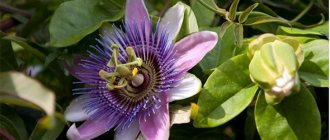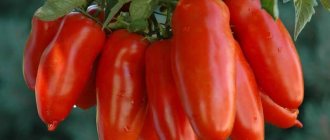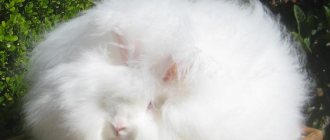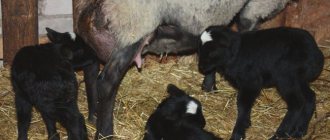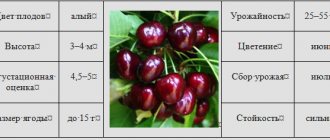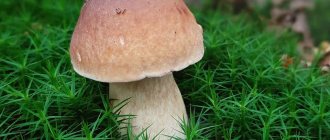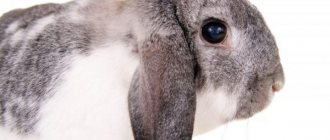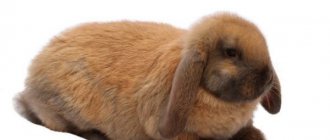Origin
Fat-tailed sheep were first mentioned in the 3rd millennium BC. All evidence of the presence of such animals was found in Asian countries, while in Europe at that time there were simply no meat-and-fat animals. Experts explain this by the poor feed resources inherent in the states of the Central Asian region.
The main feeding grounds were pastures with sparse and nutrient-poor vegetation, so animals were selected in such a way that on this poor food they could gain weight and store fat.
In addition to these factors, an important reason for the popularity of fat-tailed animals in this region was the lard they produced, which made it possible to preserve the resulting meat in hot climates. This was especially appreciated by nomadic peoples.
Since its appearance, the distribution area of the fat-tailed varieties has not increased much. This is explained by the specificity of such sheep breeds and the differences in cultures and mentalities of different regions of the world.
Meat-fat types of sheep were and are reluctantly bred both in Russia and in other European countries. This is due to the low fertility of such animals and differences in the gastronomic tastes of the populations of Europe and Asia.
Now experts are making attempts to increase the number of tallow animals, but so far they have not achieved much success.
As it turned out, fat-tailed breeds are poorly suited for intensive methods of modern farming and many modern technologies are not applicable to them.
How was the breed developed?
Initial information about fat-tailed rams appeared in the 3rd century BC. Such cattle were raised on lands belonging to Central Asia. There were no sheep on European lands at that time that could provide both meat and lard.
The existence of fat tail rams took place in harsh circumstances. Although even a meager diet and a minimal amount of water could not prevent the development of the ability to gain weight, and these characteristics were transferred to modern fat-tailed sheep.
Nomads preferred to raise this type of livestock directly, because these animals were able to provide their owners with the meat and fat necessary for subsistence, and they were also resistant to climatic factors. The fat-tailed ram was able to withstand a multi-day journey and show almost no signs of fatigue. In addition, they were not afraid of changes in temperature.
What is different about a fat-tailed ram?
Photo:
The main distinguishing feature of fat-tailed sheep is the fat sac located in the sacral region.
This bag is called fat tail, which is where the name of the animals and the entire direction of the species comes from. The fat tail is a storehouse of nutrients, fat, and moisture.
When suddenly difficulties arise in obtaining food or water, the animal uses up these reserve elements in order to survive.
Interesting! Fat-tailed sheep are often compared to camels, which use their hump to “storage” water and nutrients.
The size and weight of the fat tail can be completely different - small, medium, large. Of course, the goal of every breeder is to get the maximum fat tail, and that is, a large fat tail, weighing 15-20 kg.
But such masses are quite rare and only in favorable conditions; most often the weight of the fat tail varies between 5-10 kg.
Fat-tailed sheep/ram
This variety got its name due to the presence of a fat tail in the structure of the body - a kind of fat “bag” that is formed starting from the sacrum and ends on the first 5 vertebrae from the base of the tail. The fat tail consists of two halves, covered in the upper part with wool, and a tail is placed between them. There is also a group of half-tailed sheep (Tushinskaya, Karabakh), in which fat accumulates not only on the rump and thighs, but also in the tail around its skeleton.
According to the general description, the usual weight of a fat tail is about 8–10 kg, but, depending on the breed, it can reach 30 kg. During the fattening period, fat, a large supply of vitamins, minerals and moisture are deposited here, which then help the animal survive when nutritional problems arise. In this feature, fat-tailed rams are partly similar to camels, only in those the deposits are formed in the form of humps, and in sheep - in the form of protruding sebaceous seals on the butt.
Did you know? Fat tail fat has the properties of an excellent preservative.
To preserve fresh meat in warm climates, it was rubbed with this product. Fat tail fat is widely used in the preparation of traditional oriental meals, as well as as a rub for colds . Humanity has been raising this type of sheep since the 18th century. For the most part, they were previously bred in Asian countries, but now these animals are widespread in other regions.
Main characteristics
The average height of fat-tailed sheep and rams is about 1 m. Weight varies depending on the breed, but the approximate data is as follows: the average weight of a female is about 70 kg, a ram is 80–90 kg , and under good care conditions the weight can exceed these figures. The animals look quite interesting: they have a strong body on long thin legs, a relatively small elongated head with drooping ears, and most often there are no horns.
The coat is quite hard and thick, always monochromatic, can be black, gray, brown, and sometimes red . It is used to make carpets and blankets. Higher quality fleece becomes a good material for making sheepskin coats and elite fur products.
The meat of fat-tailed animals is considered a delicacy. It is tasty and nutritious; the carcass of young lambs, up to six months old, is especially valued. By this time, the weight of the lamb can reach 35 kg, so there is something to eat.
Advantages and disadvantages of the type
Fat-tailed sheep are found on pastures much more often than other varieties.
- This is explained not only by the fact that animals bring a lot of benefits (they provide milk, meat, lard, a large shear of wool), but also by a large number of positive characteristics that nature has awarded them, namely:
- amazing endurance - it’s not at all scary if the pasture is located far from the place where the animals are located, because fat-tailed sheep and rams can easily cover distances of up to 500 km;
- undemanding diet - animals can live on pasture alone for about a year;
- adaptation to different temperature conditions, due to which individuals are grown in the northern and southern regions, in the mountains and on flat areas;
- animals are intensively fattened, quickly gaining good weight;
- preservation of good condition in case of lack of nutrition, thanks to deposits located in the fat tail;
- resistance to diseases.
Did you know? Sheep and rams remember their shepherd well. If two flocks of sheep mix during grazing, then at the first call of the shepherds the animals will go to their owners.
If we talk about disadvantages, here we can highlight, perhaps,
only one disadvantage - the inability to independently find the way to the stall if the animal strays from the herd. This trait is common to all rams.
Description
There are many breeds of fat-tailed sheep, each of which has its own physique, character, advantages and some disadvantages.
But if you compare not different fat-tailed breeds, but fat-tailed sheep with wool and meat sheep, then you can find certain external features of these animals:
- Fat-tailed sheep are always large. The height of a ram at the withers is about 110 cm, and that of a sheep is 75-90 cm.
- The weight of the animal can range from 60 kg (female) to 150 kg (males).
- The head is narrow and small with a hump on the nose.
- The ears are long and usually hang down.
- horns , but there are exceptions.
- All representatives of the species have a fat tail
- The fat-tailed ram has a tail of medium length, about 9-10 cm.
- The coat is thick, but always coarse, hard and short, there is no fluff.
- Color depends on the breed. Most often there are red ones, less often – brown, dark brown, black, gray, white individuals.
Overview of breed and characteristics
Fat-tailed sheep have been popular for centuries; they came to Russia from hot Asian countries. To this day, it is difficult to determine exactly where this breed originated. According to some breeders, fat-tailed sheep were obtained artificially, and according to others, they are animals domesticated by humans.
This type of agricultural livestock received its name due to the fat tail located at the rear. Here the animal accumulates fat in combination with nutrients and water. The fat tail is located directly in the area of the sacrum; it performs work by analogy with a camel's hump. Its benefits are especially evident in the cold season, when there is no pasture.
Important! If proper nutrition and maintenance are provided, the weight of a sheep's tail can reach approximately 30 kg.
Today, sheep of this breed have become popular in many regions of the Russian Federation. Livestock breeders in Crimea, the North Caucasus and other steppe regions began to breed them. Any variety of fat-tailed sheep is classified as a so-called fat-tailed animal.
As for appearance, the fat-tailed sheep, when compared with meat-wool and meat sheep breeds, is characterized by:
- long limbs;
- stocky body, reaching a height of approximately 100-110 cm;
- most often missing horns;
- small in size, slightly elongated forward, narrow head, which looks out of proportion against the background of a massive body;
- a small hump in the nose area;
- hanging, relatively long ears;
- tail equal in length to 5-6 vertebrae, covered with hair.
But as for the color, it can be exclusively monochromatic, black, gray, brown or red. The coat is uniform. Red and brown rams are more common.
On average, the weight of a male reaches 50-70 kg, and the body weight of a ram sometimes reaches approximately 100 kg.
As for the nature of these animals, they are shy. Otaru can be forced to flee by a loud sound or the appearance of a stranger or animal. The gathering of the flock must be carried out by a leader, who can be a dog, a horse or a person. There are no leaders among sheep.
Breeds
In the southern countries where fat-tailed sheep are bred there are many popular breeds. They have certain species characteristics and breed characteristics that set them apart.
Gissar breed of sheep
Most often found in Uzbekistan and Tajikistan. The average weight of a female is 89.9 kg, and a male is up to 150 kg. Only young individuals are slaughtered.
The animals are dark red in color and have coarse fur. Trimmed within 1.9 kg.
Edilbaevsky sheep
They have strong bones and a strong immune system. Females weigh up to 60 kg, males – up to 120 kg. The coat color is most often black or red. The clipping is about 3 kg per individual. Young animals have a pleasant taste, tender meat.
Females are capable of producing up to 110 liters of high-fat milk during the lactation period. Distributed mostly in Tatarstan, Bashkiria, Kazakhstan, Saratov region of Russia.
Interesting! Black Edilbaev rams and sheep have the largest tails and an abundance of wool, unlike the red representatives of the breed.
Kalmyk fat-tailed sheep
Bred in China and Mongolia. The weight of a ram is within 115 kg, of a female – 75 kg. They have excellent quality meat and relatively soft wool.
At the same time, the softest fleece is produced by animals of white and black color. Approximately cut to 3.9 kg.
Sarajin ram
Bred in Turkmenistan. Males weigh up to 90 kg, females - up to 60 kg. The fat tail has a mass of 6-7 kg. These sheep produce good fleece, the shearing amount is 2-3 kg/individual. Animals that have reached weight are allowed to be slaughtered.
Advantages of the breed
Fat-tailed sheep are characterized by increased endurance. They can move over considerable distances, and their diet may include sparse steppe vegetation. Moreover, this is not the only advantage of keeping such a breed of farm animals. Among other advantages, it is worth noting the presence of the following qualities:
- Precocity. Young animals are characterized by rapid weight gain, the daily growth rate is about 300 g. The weight of a seven-month-old lamb can reach 45-47 kg.
- Unpretentiousness to feed. Sheep can find food for themselves even in a meadow with sparse vegetation. In the summer months, they do not need additional feed; they only have enough pasture, and this does not lead to weight loss, but only to weight gain.
- Sheep are not afraid of any weather conditions - neither heat nor cold.
- Breeders can obtain from animals, in addition to wool, meat and dairy products, as well as lard.
Important! Fat tail fat is considered a valuable product. This fat is used in culinary production and in the manufacture of confectionery products. Also, fat tail fat is often used as a preservative. The product has many useful qualities.
Productivity
sheep
have very good productivity. The animal is valued for many qualities, which is why it is in great demand in hot countries.
Fat tail is the main value obtained from the animal. In countries where fat-tailed breeds have been bred for centuries, this fat sac is highly valued for many reasons.
It is used in many industries, medicine, cosmetology, and cooking. In addition to the fat tail, wool is also obtained from rams and sheep. But since it is very rough, it is unprofitable to put it into mass production (too much waste and low quality of the resulting threads).
As a rule, felt products, rugs, blankets, felt boots, carpets and similar things are made from the wool of these animals.
The fat-tailed sheep produces a lot of meat. It has a pleasant taste, soft and tender, but most importantly, it is very expensive. The texture of the meat depends on the age of the animal - the younger the better.
Gaining muscle mass occurs quickly. Already at 6 months the ram weighs approximately 60 kg.
Important! Fat-tailed sheep can be kept on pastures around the clock, so in terms of feeding they are very profitable - the main thing is to find good pasture!
Dairy sheep can provide the breeder with a lot of good milk.
The fact is that from the first days of life, young animals can eat pasture in addition to milk, so a certain amount of milk (up to 50 liters) can be collected from sheep and sold or used for processing (cottage cheese, cheese, butter, fermented milk products).
Another method of earning money when breeding fat-tailed rams is mating. Not every herd has a good stud ram.
As a rule, these are the largest, healthiest and strongest individuals. They are in high demand, so you can bring together animals from different herds and make a profit from it.
Disadvantages of keeping fat-tailed sheep
It is worth noting that sheep have hard wool, which is not used for mass production, in comparison with products obtained from wool animals. When processing their fleece, a lot of waste remains, and the wool is of low quality and relatively cold.
In addition, females are characterized by low fertility. During one lambing, one individual is capable of producing one baby, and occasionally two. So there should be a lot of queens on the farm, this helps to increase the possibility of recreating a young herd without losing the regular income received from the sale of meat products and fat tail fat.
The fat-tailed sheep is a farm animal that is a source of meat with excellent taste, healthy fat, used in the production of many culinary products, cosmetics and even medicines. By keeping such breeds of sheep, you can create a profitable production that can fully provide your family with various products, and additional profit received from the sale of excess products.
Advantages and disadvantages
Fat-tailed sheep, like any other animals, have a number of characteristic features and characteristics. Some of them are positive, while others, on the contrary, are negative.
One way or another, before you get such animals, you should familiarize yourself with all their pros and cons.
Thus, the advantages of fat-tailed animals usually include the following characteristics:
- High level of endurance - livestock breeders, scientists, and veterinarians report that animals can overcome enormous distances (up to 500 kilometers);
- Unpretentiousness in care - keeping rams and sheep does not require a lot of effort on the part of humans;
- The ability to quickly gain weight is beneficial for slaughter;
- The ability to withstand hunger thanks to the fat tail;
- Easy and quick birth – important for breeding;
- A large amount of wool that can be obtained from each individual;
- A person can use several animal derivatives at once: meat, lard, milk.
However, despite such a variety of positive features, there are also some disadvantages.
Among them are usually distinguished:
- helplessness;
- impossibility of independent existence;
- the need to constantly be in the herd.
In this way, you can be convinced that animals have much more positive traits than negative ones. That is why they have won such great love among livestock farmers around the world.
Harm of lamb tail and contraindications
Despite all the benefits and rich composition, lamb fat can be harmful to people prone to excess weight and suffering from certain diseases. It is not recommended to include it in the diet for pathologies of the cardiovascular system and atherosclerosis. You can use lard with caution if you have gastritis, colitis, gastric or duodenal ulcers. Susceptible individuals may develop skin allergies.
Content
In order for your fat-tailed rams and sheep to have the opportunity to grow and develop properly, and, as a result, bring you benefit and profit, it is necessary to observe certain conditions for their maintenance.
First of all, it is necessary to take care of the presence of a large and spacious area that will serve as a pasture. This is necessary due to the fact that animals must spend the main period of time outdoors, free grazing.
It should be taken into account that forests and swamps will not be able to play the role of pasture, which is due to the high acid content in the pasture.
If animals regularly eat such food, then poisoning will inevitably occur in their body. To make grazing as convenient as possible, it is necessary to provide your herd with security and a leader.
If we talk about approximate periods, grazing is considered optimal for 200 days a year. The rest of the time (during winter) you need to take care of creating a dry shed.
Pay special attention to humidity levels and temperature conditions. If you keep fat-tailed animals (both adults and lambs) in a cold and damp room, then there is a high probability of developing colds.
To avoid various kinds of ailments, especially infectious ones, you need to regularly (2 times a year) give your animals vaccinations specifically designed for prevention.
In addition, do not forget to periodically show your sheep and rams to the veterinarian.
Another necessary activity is wool processing. Treatment is intended primarily to protect animals from parasites.
Shampoos, sprays and other preparations are used as disinfectants. Also, do not forget to worm your animals.
The diet of animals deserves special attention. In general, they are quite picky about food, however, fat-tailed animals should be fed with simple, but high-quality food.
For two hundred days a year, during which animals graze, there is no need to worry about food - sheep and rams eat pasture. Despite this, it is necessary to maintain the water balance of animals by providing them with free access to a large amount of water.
In winter, when grazing is not carried out, domestic animals need to be fed hay and grain. It is believed that the daily norm for one individual is approximately half a kilogram of grain and 2 kilograms of hay. In addition, vegetables and root vegetables should be included in the diet.
Productivity of fat-tailed animals
All breeds of fat-tailed sheep and rams belong to the meat-fat direction of productivity. As a rule, rearing is aimed at obtaining high-quality lamb and fat located in the fat tail (Figure 4).
Note: Animal wool is also used, although due to its coarseness it is not considered too valuable.
The greatest value is still meat obtained from animals. It is soft, tender and very pleasant to the taste. The meat of young animals is considered to be of the highest quality, but carcasses of adult animals are also quite expensive.
Figure 4. Animals belong to the meat and fat direction of productivity
In addition, the value of animals also lies in the fact that they quickly gain the weight necessary for slaughter. Already at the age of six months, the live weight of a purebred ram can reach 60 kg, which is quite enough to obtain high-quality lamb.
Breeding
Breeding fat-tailed sheep can become quite a profitable business. However, before you start organizing your own business and purchasing animals, you should familiarize yourself with the features and rules of their breeding.
First of all, you need to understand that in order for such an activity to make sense and be profitable, you need to purchase a livestock that will consist of at least 12 animals.
This is justified by the fact that 1-2 rams will not bring you enough fat, milk or wool, but at the same time they will have to be properly cared for. That is why it is believed that it is much more profitable to purchase a small herd at once.
In order to begin direct breeding, you need to wait until the fat-tailed females reach sexual maturity. This usually occurs at 5-8 months of the animal’s life.
In general, the mating process can be carried out at any time, however, late autumn is considered the most favorable period.
If you plan to perform artificial insemination, it is recommended to carry it out during the same season.
Your herd of fat-tailed sheep should contain several males at the same time, who will serve as a producer.
The ideal option is a situation where you have a pair of main males on your property, as well as several spare males.
The pregnancy process in fat-tailed sheep lasts about 5 months, and the birth itself occurs quite quickly - the maximum duration is 60 minutes.
From 1 to 5 lambs can be born at a time, but the latter case is more an exception and rarity than the rule.
After the lamb is born, some mandatory procedures must be carried out.
You immediately need to clean his nose and mouth (mucus usually accumulates in these places), and if necessary, you need to puncture the amniotic sac. After this, the baby is returned to the mother, placed next to the nipple.
Not only the mother, but also any other uterus can feed a newly born lamb. This is important if a sheep has given birth to several babies at once, but does not have the ability to provide milk for all of them.
Features of sheep breeding
Breeding this breed of sheep is not difficult. The main rule should be remembered: allow healthy adults who are ready for this act to mate. Usually, only two breeding males are enough for a herd, and 2–4 are left “for reserve”.
Lambs for breeding are selected for the first time at three months of age, the next selection is carried out at one year of age. It is also possible to inseminate females artificially. To ensure that the overall genetic level of animals in a herd is at an equally high level, the best females (or males) are usually mixed with more mediocre individuals.
Fat-tailed sheep in the paddock
Typically, ewes carry their young for 4.5 months. During childbirth, one female can have from 1 to 4 babies. After birth, their nasal passages are cleared and they are immediately given milk. On the second day, the lambs are already able to graze on their own and eat green grass. By six months, the cubs gain more than half the weight of an adult animal.
The lifespan of these individuals is up to 25 years. But the best age for sheep is considered to be up to 6–7 years, while the productivity of wool and milk is considered the highest, fat reserves accumulate well, and the taste of the meat remains excellent.
We invite you to join our Zen channel and group on VKontakte or Odnoklassniki, where new articles are published, as well as news for gardeners and livestock breeders.
Similar articles:
- Altai mountain sheep - tasks of protection and development of the species
- Gissar sheep: breeding and maintenance
- Edilbaevsky sheep: how to breed and what are their advantages?
What to cook from lamb tail?
There are many recipes for dishes with the addition of fat tail; the product can be salted, boiled, fried, cooked lula kebab, added instead of butter to vegetable and meat dishes, pilaf, and baked goods with meat.
Pickling
Before salting, the lard is washed and dried. You can leave it as a 1-1.5 kg piece or cut it into 3 cm thick plates.
A mixture for salting 1 kg of fat tail is prepared from: a head of garlic; 1 soup spoon of herbs; half a small spoon of curry; half a teaspoon of black pepper; 3 tbsp. l. salt; spices to taste.
When salting a piece, multiple punctures are made in it with a knife, which are filled with the mixture, and then the lard is rubbed on top. The piece is placed in a glass container, covered and left in the refrigerator for 3-5 days.
The chopped plates are rolled in spices, placed tightly in a bowl, covered, and left in the cold for 2-4 days.
Pickling
Marinated fat tail is prepared simply; for this, a piece is cut with an accordion and placed in boiling salted water.
After 30 minutes, take out the lard, cool it, coat it with salt, pepper, and garlic. After 2 hours, the product is placed in the refrigerator for a day.
Next, the fat tail is cut into small pieces and sprinkled with red pepper, after which it is ready to eat.
Advantages of the breed
Fat-tailed sheep and rams differ from other breeds in a number of advantages:
- High adaptability to different temperature conditions.
- Fast weight gain.
- Increased fertility in females - an individual usually produces at least two lambs per lamb. Lambing occurs quite simply and human participation in this process is not required.
- Unpretentiousness in nutrition - rams and sheep can constantly eat only pasture, while they will gain weight every day. Lack of nutrition has absolutely no effect on the fertility and health of sheep, thanks to the large reserves of fat in the fat tail.
- Increased endurance - animals are able to walk up to 500 kilometers per day.
The breed has practically no disadvantages. The main disadvantage is considered to be the complete lack of orientation on the terrain. If a ram or ewe accidentally gets separated from the herd, they will no longer be able to find their way back on their own.\
The use of fat tail in cosmetology and medicine
Fat-based products are used to rejuvenate, brighten the skin, and even out the tone. The product is effective in the treatment of colds, they make wraps, add 3 drops to herbal tea.
It gets rid of:
- diseases of the kidneys, liver, gall bladder;
- fights gastritis, ulcers, thrombophlebitis;
- restores potency.
Kurdyuk saturates the body with vitamins, acids, microelements, and normalizes blood sugar levels. It is part of the Dumi Dyat oil; its medicinal properties are not inferior to badger and bear fat. To use the fat, the fat tail is not salted.
The benefits of fat tail fat
Lamb fat is rightfully considered one of the most useful components of animal origin. All sheep fat is used, but fat tail fat is especially valuable. It contains the maximum concentration of beneficial microelements and nutrients.
Fat tail fat is widely used in almost all areas of life. Detailed application is presented in the table below.
Table No. 5. Areas of application of fat tail fat.
| Application area | How to use |
| Cooking | 1. National dishes. Fat tail fat reveals a full range of flavors in many Caucasian and Asian dishes. As a rule, they use sheep meat in combination with fat. The most popular dishes are pilaf, shurpa, bozbash, samsa. And cooks get rid of the specific smell of lamb using spices. 2. A flavorful snack. Fat tail fried in a dry hot frying pan turns out to be very tasty. It is eaten together with flatbreads as a separate dish. Fried fat tail is an excellent hearty snack for strong drinks, which will help you not get drunk for a long time. 3. Excellent preservative. Adding fat tail will keep any dish fresh for a long time, even in hot weather. Fat stores well in the freezer if it is cut into small pieces and packaged. |
| Medicine | 1. Getting rid of headaches. For a long time, fat tail fat was spread in a thin layer on the forehead if the head began to hurt. After some time the pain went away. 2. Healing of wounds and disinfection. Due to its beneficial properties, fat is an excellent disinfectant. It was placed in the wound of horsemen who were wounded in battles. There was no festering, and the wound healed quickly. 3. Treatment of pneumonia. Fat can completely put a person with tuberculosis on his feet. As a treatment, he is stripped to the waist and covered with large pieces of fat tail from the neck to the waist for several hours a day. The disease subsides within a week. 4. Treatment of coughs and colds. A healing ointment “dumi yad” is prepared from fat tail, which in its medicinal properties is superior to badger and bear fat. It is used for rubbing against colds. Bronchitis and cough are treated with compresses: fat is melted and a napkin is moistened with it, which is applied to the chest. The patient is also given a cocktail of hot milk and 1 teaspoon of fat tail. 5. Elimination of swelling and pain in joints. Rubbing with “dumi yad” ointment and melted fat tail fat helps fight these ailments. |
| Cosmetology | 1. When melted, it helps fight fatty acids. 2. Reduces sweating. Hot fat is mixed with sunflower oil and garlic, and then rubbed into problem areas. 3. Fights irritation and inflammation on the skin. 4. Used as a nourishing cream for dry and flaky skin. |
Interesting! In Caucasian and Turkic settlements, pieces of fat tail are given to small children instead of pacifiers. The kids suck it with pleasure and stop crying.
Smoked fat tail fat
How does fat tail fat affect the body?
We have figured out the medicinal properties of fat tail fat. Now let's find out how it affects the body when taken orally. Research and experience demonstrate the following properties of fat tail:
- makes the construction of cell membranes more intense;
- helps women in the treatment of infertility, eliminates hormonal imbalance during menopause;
- is a source of energy;
- improves the functioning of the gastrointestinal tract;
- activates cerebral circulation, which improves memory and mental abilities;
- rejuvenates the body, has a positive effect on the condition of hair and skin;
- stabilizes blood cholesterol levels and metabolic processes in tissues;
- helps to absorb vitamins and minerals faster.
The peoples of the East treat almost all diseases with fat tail fat. In addition, for them it is a source of longevity and a means to increase potency.
Rules for keeping sheep at home
After a long time since the breeding of this species of animals, much has changed. All sorts of varieties, types and types of fat-tailed sheep appeared. In different regions where this breed is bred, different preferences have developed. In some they prefer to breed the Saradzhinsky breed, in others - the Gissar breed, and in others - the Edilbaevsky one. Some are valued for their tasty meat, others for their wool, and others for their ease of breeding.
Breeding and keeping this type of animal does not require much effort or expense. Their main location is pasture. They can stay there around the clock, only breaking off to drink water. Pasture constitutes the main summer diet of sheep. With the onset of autumn and cold weather, animals must be gradually transferred to a diet of concentrated feed, straw, silage and hay. It is strictly forbidden to feed fat-tailed sheep with hay from marsh and forest grasses. These herbs cause severe intoxication in the animal. Feeding animals with vegetables that show signs of rot is not allowed.
Fat-tailed sheep can be kept on pasture around the clock
For proper nutrition of sheep, it is recommended to add various root vegetables and melons to the daily diet. You should not limit your animal’s consumption of grain and hay. Fat-tailed sheep are sheared twice a year. The frequency of cutting directly depends on the size of the animal's hair. Most often, animals are shorn in spring and autumn. To shear sheep, you need a whole team: one person holds the animal, another shears it, a third catches it, and so on. With coordinated work, shearing a flock of sheep will not be difficult.
Like any other animal, the fat-tailed sheep needs regular supervision by a specialist. Periodically, they need to be vaccinated, inoculated and preventive measures taken against infectious diseases and parasites.
It is equally important to look after a flock of sheep in the pasture. These animals are different from other representatives of this species. Having strayed from the herd, it is difficult for them to navigate the space and return home. They are very shy and fearful, so it is so important to look after them.
Percentage yield of meat from a sheep carcass
The live weight of an adult lamb differs significantly from the weight that you will see after slaughter. In general, a lamb carcass is divided into:
- cut;
- neck;
- knuckle;
- brisket;
- flank;
- drumsticks;
- back;
- dorsal-scapular part.
After slaughter, a lamb carcass goes through many more procedures: bleeding, separation of the skin, and then the legs and head, and gutting. After all this, she loses about 50% of the slaughter yield. And these losses are considered just the beginning. Next, the bones, which make up approximately 30% of the weight, are removed, and some also get rid of cartilage and tendons. If you calculate all possible losses, then the net muscle mass will ultimately be about 70%. It follows that if a living sheep weighed 100 kilograms, then after slaughter and cleansing of all excess we will get only 30-35 kilograms of meat.
Weight of rams at different ages
Lambs are usually born quite small. In most cases, the body weight of animals of this species immediately after birth does not exceed 3.5-5.5 kg. During the first two months of life, lambs usually gain up to 350-500 g of weight per day. At the age of 1 month, the maximum body weight of these animals is 18-20 kg, and the average is 14-15 kg.
A distinctive feature of rams is, among other things, that they can quickly build muscle mass even on pasture. By receiving a minimum amount of concentrates, lambs can gain weight up to 25 kg by 2 months. On average, the body weight of animals at this age is 22-23 kg. By 3 months, the maximum weight of rams reaches 40 kg. On average, by this time lambs gain body weight of 33-35 kg.
At 7-8 months of age, these animals begin puberty. By this time, the average weight of the ram is usually 45-60 kg. These animals reach slaughter weight by 11-12 months. The maximum weight of an adult ram is 180 kg. The record body weight for these animals is 200 kg. The heaviest ram in the world weighed 247 kg. He belonged to the Suffolk breed. The average weight of adult males is 100-110 kg.
Dwarf sheep are, of course, an exception to the general rule. The maximum weight of an adult ram of this variety usually does not exceed 35 kg. On average, the body weight of such animals that have reached sexual maturity is 20-25 kg.
What products can you get?
Fat tail carriers are an excellent source of a lot of useful products:
- wool;
- meat;
- skin;
- milk;
- salo.
Wool can be coarse or semi-coarse and is used to make all kinds of products. From one individual per year, on average, you can get more than 2 kg of raw materials.
Meat, lard and milk are in great demand . In Asian countries, fat tail fat is a universal means for cooking. The skin can be used to make good, warm winter clothing.
Considering the unpretentiousness of keeping this breed and the large amount of useful products it produces, we can say with confidence that breeding such sheep is very profitable. You can consider both the option of building your own business and the option of providing your family with environmentally friendly products and materials.
Subtleties of breeding
A sheep reaches sexual maturity at 6-7 months. For successful breeding, the herd contains a pair of stud rams. For mating, healthy, tall individuals are selected. The gestation period lasts 5 months. As a rule, childbirth is easy and painless. The newborn lamb is examined, the baby's nose and mouth are cleared of mucus, and then returned to the mother. At one time, a sheep gives birth to 1-2 cubs. After just 2 days, the lamb confidently moves after its mother.
Rules of maintenance and care
In the warm season, pets are sent to pasture. There they spend most of their lives. Pasture should not be established in swampy areas, otherwise animals will feed on plants growing in acidic soil. Such food inevitably leads pets to severe poisoning. In case of bad weather, a canopy is provided for the wards. This is where the pets spend their night hours.
With the onset of frost, the rams are moved to a warm shed. Any spacious, and most importantly dry, room is suitable for pets. Sheep apartments must be protected from harmful drafts and provided with good ventilation. Otherwise, pets risk suffering from ammonia fumes.
Separate compartments are built for pregnant and lactating ewes with lambs. It should be warmer here than in the room for other pets. Newborn lambs feel good at a temperature of 16 degrees. The air temperature in the main shed should not fall below +10 degrees.
The floor is covered with dry grass or sawdust. This bedding must be changed daily. The stalls are equipped with comfortable drinking bowls. The water must be changed 2 times a day. The premises are cleaned daily. The animals are periodically examined by a veterinarian. The specialist assesses the condition of the sheep and carries out routine vaccination. In summer the lambs are bathed. Water procedures are performed no more than once every 1.5 months. A couple of times a year, pets have their hair cut and their hooves trimmed. Sheep wool is regularly treated to remove all kinds of parasites.
See also
Description and characteristics of sheep of the Tashlin breed, maintenance rulesRead
